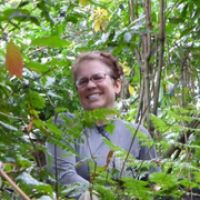Wang et al., 2020
Bioavailability of Phosphorus to Loblolly Pine (Pinus taeda L.) and Red Maple (Acer rubrum L.) in Clay and Saprolite from the Southeastern Piedmont, USA
Wang, Zhine, Aaron Thompson, Lori Sutter, and Daniel Markewitz (2020)
ASA-CSSA-SSSA International Annual Meeting, 9-13 November 2020
-
Calhoun, GRAD STUDENT
-
Calhoun, Luquillo, INVESTIGATOR, COLLABORATOR
-
Calhoun, STAFF
-
Calhoun, INVESTIGATOR
Abstract
Identifying the bioavailability of soil P pools and quantifying the amount of potential P uptake is important for defining long-term ecosystem productivity. We use a bio-assay with loblolly pine (Pinus teada L.), an ectomycorrhizal species, and red maple (Acer rubum L.), an arbuscular species, to evaluate P uptake from soil clay (60-100 cm) and saprolite (450-500 cm) of the Calhoun Critical Zone Observatory in the Piedmont of South Carolina USA. Total P in plants after 1-yr of growth was assessed relative to changes in soil P pools defined by Mehlich III, Hedley fractions, or total P. We also indexed the extent of Fe reduction and phosphatase activity as potential mechanisms of P release. P was limited in both substrates as demonstrated by high plant mortality and low seedling P uptake (<4500 µg of P uptake per pot with ~180 g of substrate). However, relative to clay, saprolite possessed higher MIII P, total P, and plant available P. After 1-yr of growth in the greenhouse, resin Pi significantly decreased, while NaHCO3 Pi increased, potentially as a result of buffering from other P pools. NaOH Pi was dynamic appearing to supply P to plant growth, although our Fe reduction assays provided no clear evidence that plants had an effect on soil iron reduction as a mechanism of P release from this pool. Saprolite is high in HCl Pi, presumed to be Ca bound P, although no apatite is evident. Phosphatase activity measured after six months did not differ between pine and maple. Plant P uptake was not the only driver of soil P decline as plant P uptake alone could not account for soil total P reduction. Overall, the experiment indicates that P availability is limited in these soils but saprolite may be an unrecognized source of soil P sustaining forest growth.
Citation
Wang, Zhine, Aaron Thompson, Lori Sutter, and Daniel Markewitz (2020): Bioavailability of Phosphorus to Loblolly Pine (Pinus taeda L) and Red Maple (Acer rubrum L) in Clay and Saprolite from the Southeastern Piedmont, USA. ASA-CSSA-SSSA International Annual Meeting, 9-13 November 2020.
 This Paper/Book acknowledges NSF CZO grant support.
This Paper/Book acknowledges NSF CZO grant support.
Explore Further




